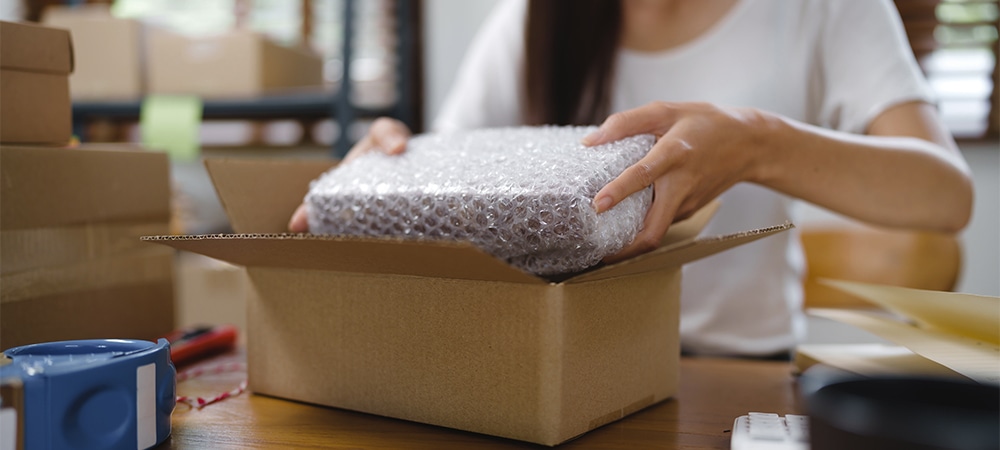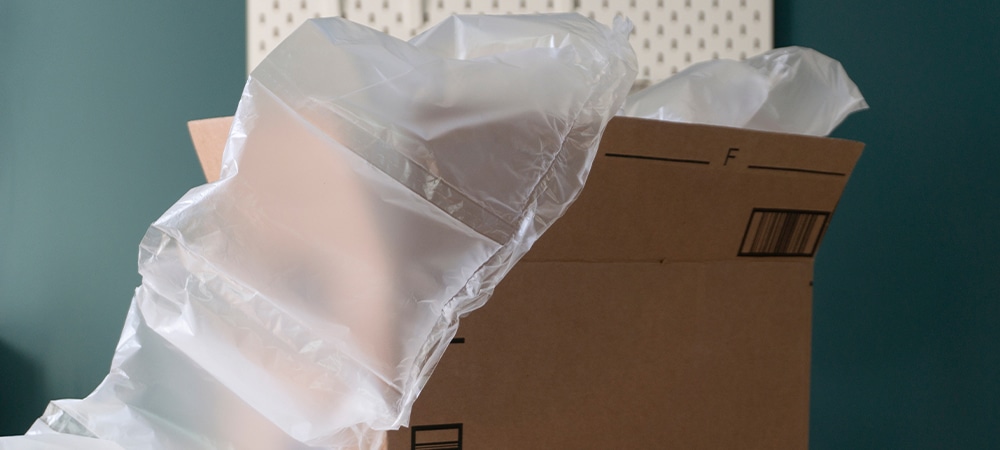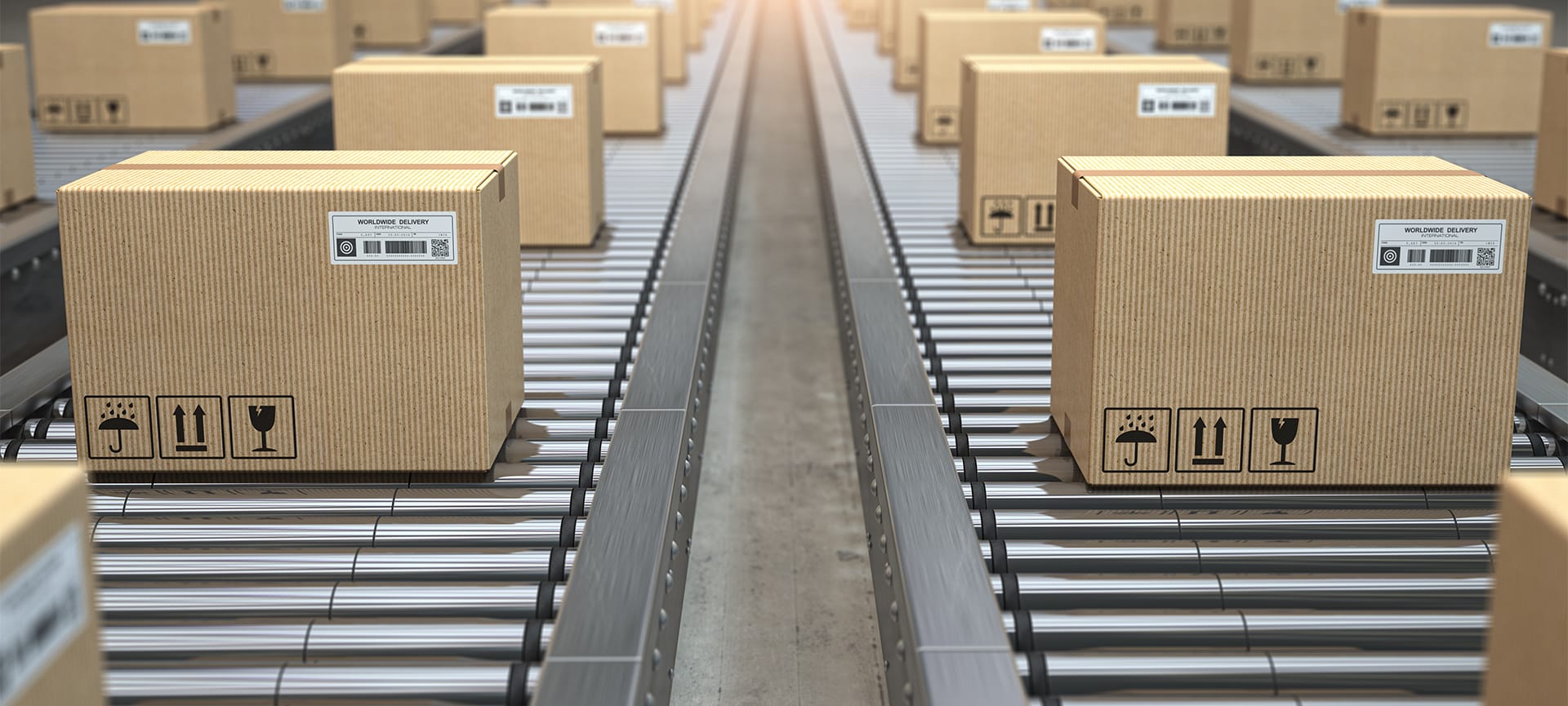Canadian businesses shell out billions annually on shipping – a staggering figure that often flies under the radar. Yet, hidden within those costs lies a goldmine of potential savings.
In a country as vast as Canada, where goods traverse thousands of kilometres, shipping expenses can quickly eat into profits. Businesses constantly grapple with rising costs, from soaring fuel prices to carrier surcharges.
But what if there was a way to regain control and protect your bottom line?
Enter packaging. While often overlooked, the size, weight, and materials of your packaging directly impact your shipping bill. Businesses can significantly reduce shipping costs by making strategic choices without compromising product protection or customer satisfaction.
In this article, we’ll reveal how packaging plays a pivotal role and give practical tips to optimize your packaging strategy.
Get ready to discover how small changes can lead to big savings, allowing you to ship smarter, not harder.
The Direct Impact of Packaging on Shipping Costs
Your packaging choices directly influence how much you pay for shipping. Here’s how:
Dimensional Weight (DIM Weight): The Phantom Weight
Shipping isn’t just about how much your package weighs—it’s also about how much space it takes up.
Carriers often utilize a pricing method known as dimensional weight, or DIM weight, which factors in the size of a package alongside its actual weight. This calculation involves multiplying the package’s dimensions (length, width, and height) and dividing the result by a carrier-specific divisor.
The DIM weight can often exceed the actual weight for lightweight but bulky items, resulting in higher shipping charges. This is because carriers charge you for the space your package occupies on their trucks or planes.
Striking the Right Balance between Materials and Weight
Protective packaging is crucial to ensure your products arrive at their destination in pristine condition. However, overly bulky or heavy packaging materials can significantly increase shipping costs. Striking the right balance is key.
Consider alternatives like lightweight corrugated cardboard boxes, padded mailers, or inflatable packaging to reduce weight without sacrificing protection. Utilizing the right materials can lead to substantial savings over time.
Related Article: What Are the Size and Weight Limitations for Air Freight from Toronto to Chicago?

Packaging Waste: The Silent Cost Culprit
Excessive packaging isn’t just an environmental concern—it’s also a financial drain. Using more packaging than necessary means you’re paying to ship air.
Oversized boxes or excessive void fill (like packing peanuts) add unnecessary weight and volume, driving up shipping costs.
Minimizing packaging waste is good for the planet and your bottom line. By carefully evaluating your packaging choices and opting for more efficient solutions, you can reduce waste and enjoy lower shipping costs.
Practical Tips for Optimizing Packaging
Ready to trim down your shipping costs? Here are some practical packaging strategies you can implement right away:
Right Sizing
The golden rule of packaging is to use the smallest possible box or envelope that still adequately protects your product. Oversized packaging is a common culprit for inflated shipping costs. It leads to higher DIM weight and wasted space, translating to more money out of your pocket.
Carefully measure your product’s dimensions and select packaging that fits snugly. This minimizes excess space and ensures you’re only paying for the space your product actually occupies.
Material Selection
Choosing the right packaging materials is a balancing act between cost and protection. Here’s a quick comparison:
- Corrugated Cardboard: A versatile and sturdy option that protects various products. It’s readily available and often recyclable, making it a sustainable choice.
- Poly Mailers: Lightweight and flexible, poly mailers are ideal for non-fragile items like clothing or soft goods. They’re cost-effective and take up minimal space.
- Inflatable Packaging: Air pillows or bubble wrap provide excellent cushioning for fragile items. While slightly more expensive, they can save on DIM weight due to their lightweight nature.
When selecting materials, consider your product’s fragility, shipping distance, and budget. Don’t overpack – choose the most cost-effective option that still ensures your product arrives safely.
Related Article: Packing Foundations: Tips for Shipping Fragile Items
Void Fill
Void fill is essential for preventing your product from shifting during transit, but choosing the right type is important.
- Packing Peanuts: A classic choice, but they can be messy and not always the most eco-friendly option.
- Air Pillows: Lightweight and provide excellent cushioning, making them a great option for reducing DIM weight.
- Crinkle Paper: An eco-conscious alternative that provides cushioning and can add a touch of personalization to your packaging.
Select void fill based on the fragility of your product and the amount of space you need to fill. Aim for maximum protection with minimal weight.

Protective Packaging
The level of protective packaging you need depends on several factors:
- Product Fragility: Delicate items require more cushioning and protection than sturdy ones.
- Shipping Distance: Longer journeys may require additional protection for more handling.
- Value of the Product: High-value items warrant extra care to prevent damage or loss.
Use common sense and consider the worst-case scenario during shipping. Invest in extra protection if your product is likely to encounter rough handling. Remember, preventing damage is far cheaper than replacing lost or broken goods.
Advanced Packaging Strategies
For businesses ready to level up their packaging game, consider the advanced strategies that can significantly impact your bottom line.
Custom Packaging
When standard packaging options fall short, custom packaging can be a game-changer. By tailoring the dimensions and design to your specific products, you can:
- Optimize space – Eliminate wasted space and reduce DIM weight, lowering shipping costs.
- Minimize material usage – Use only the necessary material, reducing waste and expenses.
- Enhance branding – Custom packaging can showcase your brand identity and leave a lasting impression on your customers.
Investing in custom packaging might seem like an added expense, but it often pays for itself through long-term cost savings and improved customer perception.
Kitting and Assembly
If you ship products often purchased together, consider pre-assembling them into kits. This can reduce your shipments’ size and weight, lowering shipping costs. It can streamline your fulfillment process and improve customer satisfaction.
Sustainable Packaging
The demand for eco-friendly packaging is rising, and for good reason. Consumers are increasingly conscious of the environmental impact of their purchases.
By embracing sustainable packaging materials like recycled cardboard or biodegradable fillers, you can:
- Reduce environmental impact – Minimize waste and lessen your carbon footprint.
- Lower costs – Sustainable materials are often more cost-effective than traditional options.
- Boost brand image – Show your customers that you care about the environment, which can enhance brand loyalty and attract new customers.
Negotiating with Carriers
Don’t be afraid to negotiate with your shipping carriers. If you ship a high volume of packages, you may be able to leverage that volume to negotiate lower rates. Consider signing a contract with a carrier to secure discounted pricing.
Be transparent about your shipping needs and expectations. By building a strong relationship with your carrier, you can work together to find the most cost-effective solutions for your business.

Packaging Solutions from RoadLINX
Handling the complexities of packaging optimization can be a daunting task for businesses. That’s where RoadLINX comes in. With years of experience in the logistics industry, RoadLINX understands the nuances of packaging and its impact on shipping costs.
We help businesses develop tailored packaging solutions that protect products, optimize space, and minimize waste.
RoadLINX offers a range of packaging services designed to meet the unique needs of each business:
- Packaging assessment
- Custom packaging design
- Packaging fulfillment
Businesses can leverage their expertise to streamline their packaging operations, reduce shipping costs, and enhance their supply chain efficiency when they partner with RoadLINX.
Don’t Let Packaging Weigh Down Your Profits: Ship Smarter
In the freight shipping industry, every inch and ounce counts.
Strategic packaging choices can be the difference between soaring costs and significant savings. Businesses can proactively optimize their packaging and reduce shipping expenses by understanding the impact of dimensional weight, material selection, and void fill.
Whether through right-sizing, exploring sustainable alternatives, or investing in custom solutions, there are countless opportunities to ship smarter, not harder.
And for businesses seeking expert guidance, RoadLINX stands ready to help. With our deep understanding of packaging optimization and commitment to tailored solutions, we can empower your business to unlock the hidden savings in your shipping operations.
Ready to transform your packaging into a competitive advantage? Get a free estimate on your shipping today by reaching out to us. Discover how we revolutionize your shipping strategy.



